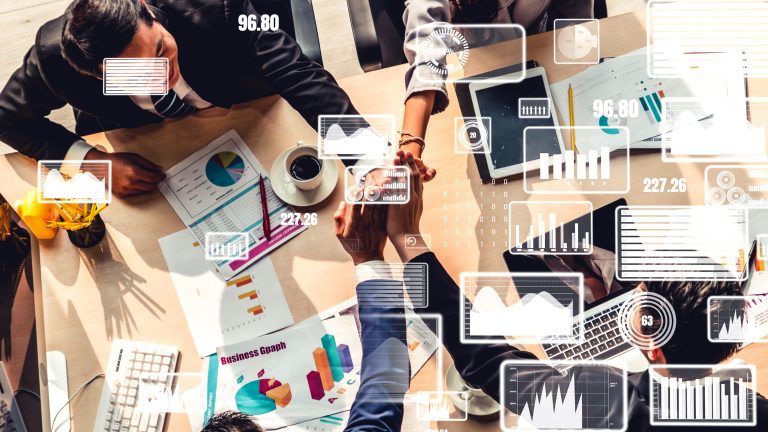In recent years, technology has impacted how businesses do things, including HR resource management. This has happened in different areas, from hiring to onboarding and payroll management. In the future, technology will continue to play a crucial role in HR management. This article will examine the role of technology in modern HR management.
How Technology Has Revolutionized HR
In the past, most organizations maintained paperwork as part of their HR management. With technology, many businesses moved from paper-based to computer-based databases. This has added efficiency and effectiveness to HR functions.
With cloud technology, it has become easier for HR professionals to access data from any location. Similarly, AI has helped to streamline HR functions. For instance, AI-powered chatbots can help screen candidates.
Application of Modern Technology in HR Management
By using technology in the HR profession, businesses can streamline their processes and improve productivity. Here are the areas in which technology can help streamline HR management.
Streamline recruitment and hiring.
Modern Technology plays a significant role in enhancing recruitment. Software such as Chaptgpt can help companies write job posts. Other AI software can then help manage applications and assess candidates. Tasks such as resume screening take a lot of time and hard work. Fortunately, AI-powered bots can help assess candidates according to their qualifications, ensuring fairness and time-saving.
With technology, recruiters can quickly analyze a large pool of candidates, increasing their chances of getting the right candidate. Examples of modern HR technologies to streamline recruitment are:
- Application tracking system(ATS): An ATS manages the whole recruitment process, from job postings to application management and resume evaluation. Tools such as Zoho Recruits, Workable, and Bamboo HR will enable you to do this.
- Video interview technology. This is another modern technology that is becoming popular with HR professionals. Tools like Zoom have allowed recruiters to conduct interviews without needing face-to-face interviews, removing geographic barriers and reducing transport costs.
- Interview testing and assessment technology. Software such as HireValue enables recruiters to assess applicants’ job skills and shortlist them. This saves them time, as they can determine which candidate to proceed with in the next phase of the hiring process.
Employee onboarding and training
Employee onboarding is a key procedure that helps create a positive company image and improve employee retention rates. It also helps set clear job expectations, improving productivity. Training programs can help employees acquire specific knowledge and skills.
Employers can use modern technology to make the onboarding process easier. Instead of using manual paperwork or training, they can use modern technology to help them understand company policies and their roles and responsibilities. Some of the best onboarding software in 2024 are:
- Sapling. The tool recognizes that strong workflows are the primary requirement in an onboarding process. Therefore, it enables employers to design workflows, create tasks, and assign them to new hires. Employers can also add details sch as deadlines, descriptions, and subtasks.
- Enboarder: This web-based software enables employers to assign tasks and mentors to new hires.
Employee Management
HR software is primarily meant to optimize workflows and Human Resource workflows. It helps improve employee experience throughout the employment cycle, from recruitment to retention. This can be in areas such as:
- Storage of applicants’ employee information. The HR field has also benefited from cloud technology and SAAS in storing applicant and new employee information, helping to reduce paperwork and improve accessibility. HR professionals can use cloud-based software to improve talent acquisition processes, administration, and payroll management.
- Employee management. HR software can help improve how employees are managed. Moat software has a people Analytics feature for better management of employees. For instance, the feature can provide details on employee turnover in every department and the reasons for a high turnover.
- Training gaps. By analyzing performance data, employers can detect training gaps and make improvements.
Performance Management
Technology-driven software is replacing traditional performance evaluation methods. Companies are now using modern technology to receive continuous feedback and evaluation. Performance management modules have interactive features that enable employers to evaluate and monitor employees in real-time.
Companies can use top performance management systems to identify the top performers, give targeted feedback, and develop personalized learning programs. Such systems allow companies to leverage workforce analytics and make decisions driven by data on promotions, skill development, and career paths. Organizations can also use technology to increase employee retention, development, and productivity.
Payroll management
While Payroll management was among the first departments to be revolutionized by technology, the latest technological advancement continues to improve the process. Modern technology like AI and blockchain is increasingly used in payroll management to increase efficiency, accuracy, and overall payroll management. This is in areas of:
- Automated data entry. AI impacts how payroll data is collected and entered from different sources, such as attendance and time systems, tax forms, and employee databases.
- Data validation. Blockchain technology can help improve data validation by identifying missing data, errors, and inconsistencies. This can help ensure the sanctity of the payroll.
- Attendance and time management. AI-driven predictive analytics can help process data on clock-ins and clock-outs.
- Tax compliance. Using AI in HR can help companies stay compliant with tax systems by updating tax rules for payroll systems in real-time.
- Managing employee benefits. Technology can automate contributions and calculations for health insurance and retirement plan deductions. Therefore, AI technology can help businesses better manage employee benefits.
- Respond to customer queries. If there are routine customer queries, chatbots can help answer them.
Final Thoughts
There is no doubt that technology has revolutionized HR functions. From improving employee engagement to streamlining processes and making data-driven decisions, there are many areas where technology can improve HR functions. We have covered some of the most critical ones in our articles. By harnessing the power of modern technology in HR, businesses can transform their processes and enjoy overall business success. For those looking to boost their social media presence, it’s also beneficial to explore options to gain Instagram promotion, enhancing visibility and engagement on the platform.
Guest writer.

















